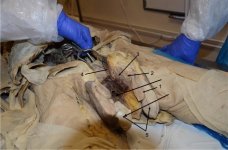Two charged in Winnipeg after alleged torture, killing of cats posted to dark web
Author of the article:Canadian Press
Canadian Press
Published Oct 12, 2024 • 1 minute read
WINNIPEG — A man and a woman in Winnipeg face numerous animal cruelty charges in a case where police allege cats were tortured and videos and photos of the incidents were posted to the internet.
Const. Stephen Spencer says the Office of the Provincial Veterinarian Animal Welfare contacted police in August about images of animals being tortured and killed that were posted on the dark web.
Spencer says approximately 10 cats were believed to be involved, some of which were acquired from social media sales platforms, and investigators believe the video and photos were created and posted in Winnipeg.
A search warrant was executed in the city’s Lord Roberts neighbourhood, and a 55-year-old woman and a 40-year-old man were arrested.
Spencer says the pair were known to police, but he did not have information on how they knew each other.
Both of the accused remain in custody.
“Investigators told me that this is the worst case that they’ve dealt with — a very horrible case involving animal cruelty,” Spencer told a news conference on Friday.
“I can say anecdotally when individuals are believed to be involved in heinous crimes against helpless animals, it often leads to escalating violent behaviour towards humans, so we take that very seriously.”
Investigators are still working on a motive in the case, Spencer said. He said someone viewed the disturbing content online and then contacted the province.
Police in Winnipeg have also been investigating cases of cats being found dead in the Point Douglas area, but Spencer said investigators do not believe the cases are related at this time.

 torontosun.com
torontosun.com
Author of the article:Canadian Press
Canadian Press
Published Oct 12, 2024 • 1 minute read
WINNIPEG — A man and a woman in Winnipeg face numerous animal cruelty charges in a case where police allege cats were tortured and videos and photos of the incidents were posted to the internet.
Const. Stephen Spencer says the Office of the Provincial Veterinarian Animal Welfare contacted police in August about images of animals being tortured and killed that were posted on the dark web.
Spencer says approximately 10 cats were believed to be involved, some of which were acquired from social media sales platforms, and investigators believe the video and photos were created and posted in Winnipeg.
A search warrant was executed in the city’s Lord Roberts neighbourhood, and a 55-year-old woman and a 40-year-old man were arrested.
Spencer says the pair were known to police, but he did not have information on how they knew each other.
Both of the accused remain in custody.
“Investigators told me that this is the worst case that they’ve dealt with — a very horrible case involving animal cruelty,” Spencer told a news conference on Friday.
“I can say anecdotally when individuals are believed to be involved in heinous crimes against helpless animals, it often leads to escalating violent behaviour towards humans, so we take that very seriously.”
Investigators are still working on a motive in the case, Spencer said. He said someone viewed the disturbing content online and then contacted the province.
Police in Winnipeg have also been investigating cases of cats being found dead in the Point Douglas area, but Spencer said investigators do not believe the cases are related at this time.

Two charged in Winnipeg after alleged torture, killing of cats posted to dark web
A man and a woman in Winnipeg face numerous animal cruelty charges.















![coyote-dog[1].jpg coyote-dog[1].jpg](https://forums.canadiancontent.net/data/attachments/24/24123-28055d410189b31d823ccd00206fe444.jpg)




